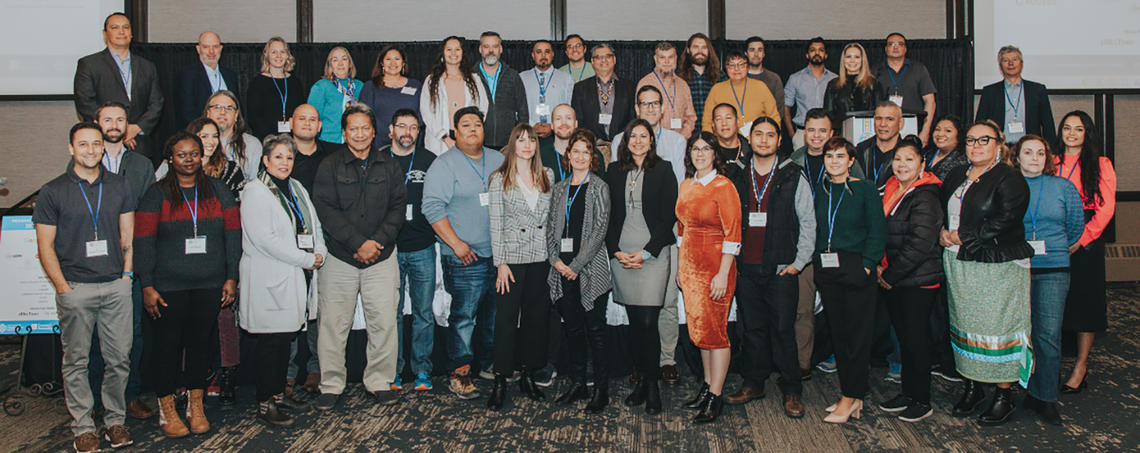Jan. 23, 2023
Community, industry and policy leaders call for action to conquer Canada’s Indigenous digital divide

It’s a bleak statistic. While 97 per cent of households in Canada’s largest cities enjoy high-speed internet, that number falls to 37 per cent in rural areas, and just 24 per cent in Indigenous communities.
“Current spectrum management policies are contributing to Canada’s deep digital divide,” write western Canadian Indigenous leaders James Hobart and Cindy Woodhouse in Policy Options. “This lack of connectivity exacerbates socio-economic inequities, including business opportunities, employment, education, and physical and mental health.”
While the tide is slowly turning, the gap remains troubling for a key group of Indigenous leaders, digital network operators, and policymakers. The group, the Indigenous Connectivity Summit, met recently in Winnipeg to identify actions to narrow the gap, improving access to fast, affordable internet in often remote First Nations communities.
One of the main points of discussion was spectrum sovereignty, the idea that Indigenous communities should have the right to govern and benefit from the spectrum — the radio waves upon which wireless internet traffic travels — over their own lands. In Canada, the spectrum is regulated by the federal department of Innovation, Science and Economic Development.
Among experts who spoke at the summit was Gregory Taylor, associate professor in UCalgary’s Faculty of Arts, who advised the group on spectrum policy and its role in driving systemic social change. “The key thing that must happen is genuine consultation between the Canadian government and Indigenous communities on issues of connectivity and spectrum. This simply has not happened in the past,” says Dr. Taylor, PhD.
The five key calls to the governments of Canada and the United States for action, authored by the Indigenous Connectivity Institute, were:
- Support a new Indigenous task force on telecommunications and work proactively with Indigenous rights-holders in future consultations and funding processes.
- Take a First Mile First approach on future government-funded projects, meaning that a system’s design should reflect the unique conditions and strengths of each Indigenous community.
- Strengthen regulatory mechanisms to hold government and industry accountable for their use of funds, and for their responsibility to act in the best interest of the local community.
- Acknowledge Indigenous rights to govern and manage the spectrum over traditional territories, in support of improving services such as climate change monitoring, food security, health and safety — especially pertaining to missing and murdered Indigenous people— mental health and wellness, education, and economic development.
- Work with colleges and technical organizations to develop the digital workforce capacity of Indigenous people.
“There have been real advances in Indigenous spectrum sovereignty in many regions of the world, including New Zealand, the United States and Mexico,” Taylor says. “The pattern is by no means uniform. Each country must consider the particular needs and claims of its Indigenous people.
“Canada is only taking its first tentative steps in this direction.”
Some Indigenous people have taken the initiative to hook up wireless internet access in their own communities, such as Bruce Buffalo of Maskwacis, Alta., who configured rooftop internet hotspots so residents of his town could afford to stay connected. “However, the system cannot rely on the talents of one gifted individual,” Taylor says.
The social implications of spectrum policy are not always apparent. “Even though we have been manipulating radio spectrum for over 100 years, many seem to view this as something beyond their technical knowledge,” Taylor points out. “The field is often left to engineers and economists. Recognizing the social impact of radio frequencies requires critical and engaged scholarship across a range of disciplines.
“I always try to emphasize in my classes that often these seemingly mundane, even invisible, aspects of modern communications are actually sites of great power dynamics. In this case it’s about the frequencies that carry our wireless data. Who should own and control the airwaves?”
Concluding the Winnipeg summit, the Indigenous Connectivity Institute saw reason for optimism. In a website post, the institute says, “As we emerge from the pandemic, it appears there is an unprecedented level of commitment from governments, the private sector, and the philanthropic community to address the connectivity gap.
“At this year’s summit, delegates were focused on ensuring that this energy translates into action.”

UCalgary scholar Gregory Taylor, back row-right, joined delegates from across Canada and U.S. at the 2022 Indigenous Connectivity Summit in Winnipeg.
Indigenous Connectivity Institute







